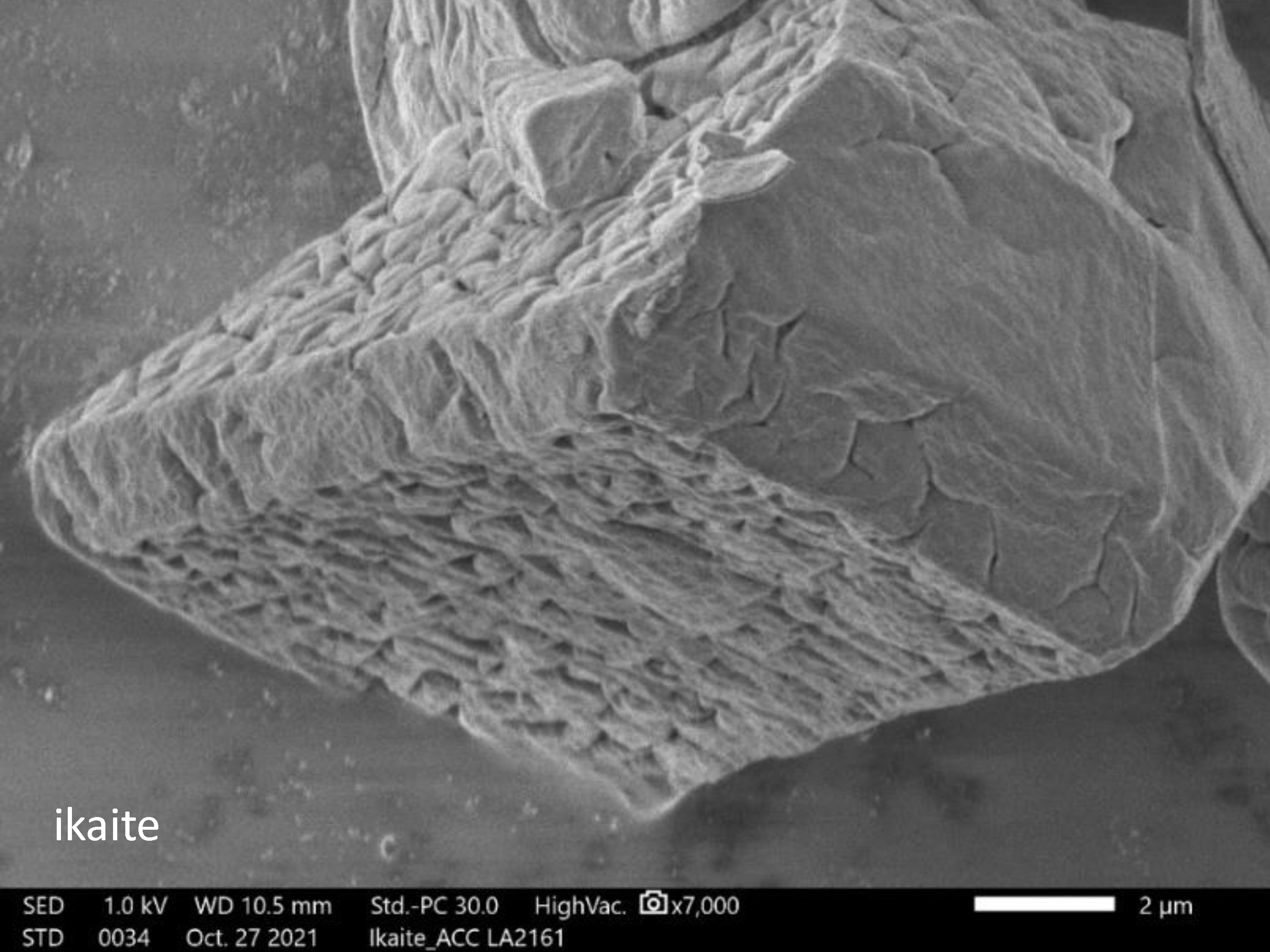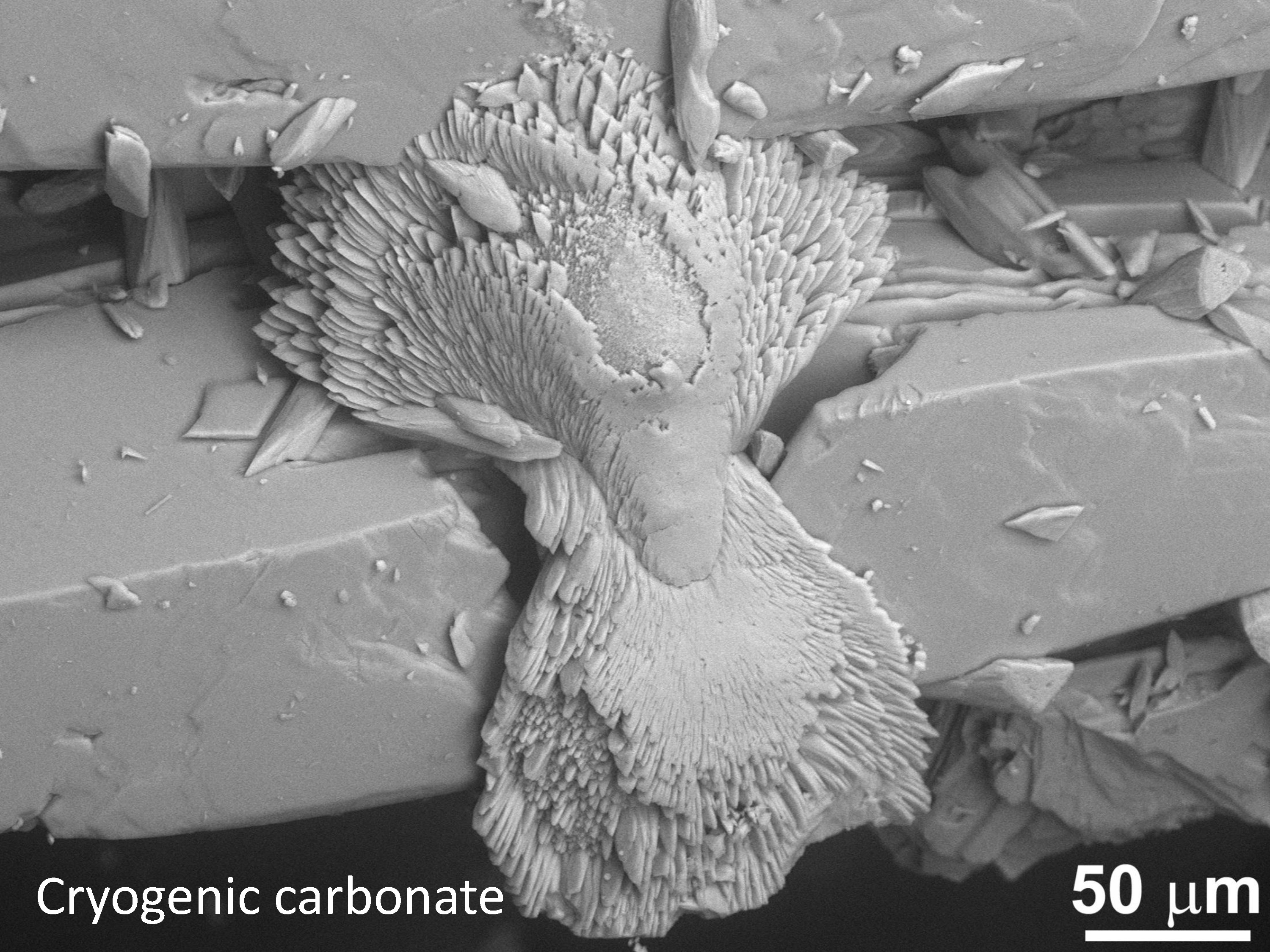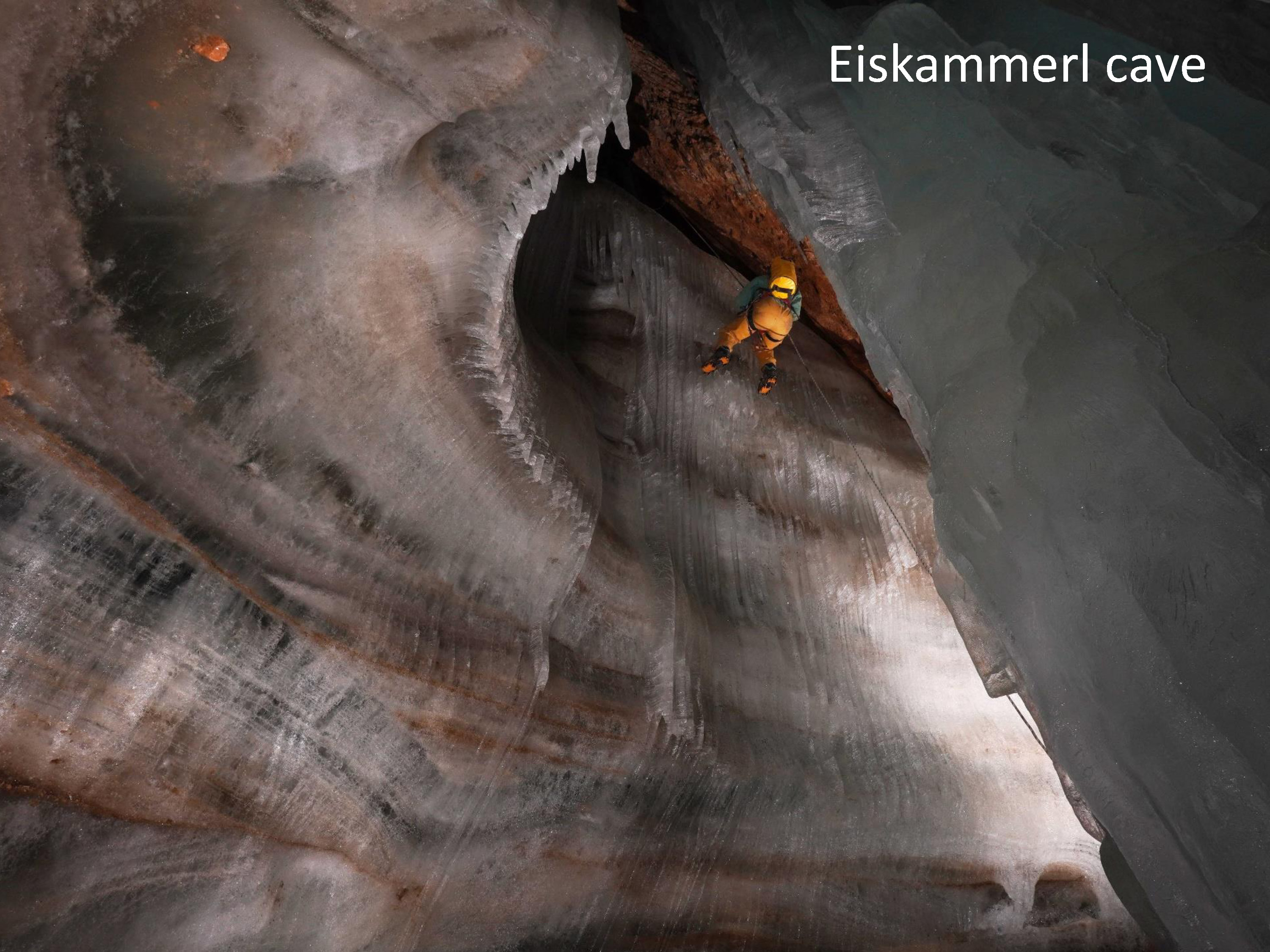NANOCAVE Research Group



Researchers
In Budapest:
- Péter Németh
- Attila Demény
- György Czuppon
- Máté Karlik
- Nóra Lange-Enyedi
- Anett Lázár
In Innsbruck:
- Christoph Spötl
- Gabriella Koltai
- Yuri Dublyansky
Description
The „NANOmineralogy of CAVE Deposits” - NANOCAVE Research Group was established in 2022 (see Memorandum of Understanding here) to foster the collaboration between the Institute for Geological and Geochemical Research, RCAES, Hungary and the Innsbruck Quaternary Research Group, Institute of Geology, University of Innsbruck, Austria. The Research Group works together on the nanomineralogy of carbonate cave deposits, combines the expertise and laboratory facilities of the two parties, promotes joint research projects, publications and workshops/ conferences/seminars, and the mutual exchange of the research staff.
Projects
1. Title: Cryogenic cave carbonates: a key archive of permafrost thawing events
Project numbers: 2019-2.1.11-TÉT-2019-00016 and FWF I027070 Interval: 01.01.2020-31.12.2022 Project leaders: Yuri Dublyansky, Christoph Spötl, and Péter Németh Abstract Coarse crystalline cryogenic cave carbonates (CCC for short) are a unique type of deposits in caves, which are believed to form in freezing pools of water on bodies of cave ice during times of slow thawing of permafrost. These deposits hold high promises as a key archive to identify and date permafrost thawing events in the past, to reveal permafrost dynamics on millennial timescales and to understand the vulnerability of permafrozen ground in recent decades both at high latitudes and in high mountain regions. Although known since the 1990s, CCC have received wide-spread attention only in recent years [e.g., 1, 2]. Despite their relevance and increasing popularity, fundamental questions about their origin, composition and mode of formation are still unanswered. This project aims to tackle long-standing questions, which have important implications for the interpretation of CCC formation and proxy data and are pivotal for identifying permafrost thawing events. Specifically, we plan to (1) identify the initial carbonate phase/s during precipitation of CCC, and (2) determine the possible reaction pathways that lead to the final calcite commonly observed in field studies. Our preliminary observations led to the hypothesis that ikaite, CaCO3 hexahydrate, could be a precursor of cryogenic calcite, but it is unclear whether other hydrous (e.g., monohydrocalcite) and possibly amorphous phases, shown by recent observations of samples from a cave in Hungary [4], exist as well. We plan to test the hypothesis of ikaite being a precursor phase by investigating the ultrafine of a range of CCC and preparing cryogenic samples in the laboratory under controlled conditions. In particular, we plan to study naturally formed CCC and search for evidence of phase transformations. We will also sample CCC in-situ in ice caves of the Alps and transport them to the laboratory in cold conditions preventing their transformation into calcite (which occurs > 5-7 °C). In parallel to the natural samples, we plan to design experiments to study carbonate precipitation under controlled cryogenic physico-chemical conditions. We propose to measure both natural and synthetic samples using cutting-edge petrographic, mineralogical, crystallographic and geochemical techniques. We will determine the structure of initial carbonate phase(s), elucidate their chemical and isotopic compositions and monitor their transformation. [1] Žák, K., Onac, B.P., Kadebskaya, O., Filippi, M., Dublyansky, Y., Luetscher, M. (2018): Cryogenic Mineral Formation in Caves, in: Perşoiu, A., Lauritzen, S.-E. (Eds.), Ice caves, Elsevier, Amsterdam. [2] Kluge, T., Affek, H.P., Zhang, Y., Dublyansky, Y., Spötl, C., Immenhauser, A., Richter, D.K. (2014): Clumped isotope thermometry of cryogenic cave carbonates. GCA 126, 541–554. [3] Dublyansky Y., Moseley G. E., Lyakhnitsky Y., Cheng H., Edwards R. L., Scholz D., Koltai G., Spötl C. (2018): Late Palaeolithic cave art and permafrost in the Southern Ural. Sci. Rep. 8, 12080. [4] Demény, A, Németh, P., Czuppon Gy, Leél-Őssy Sz., Szabó M, Judik K, Németh T & Stieber J (2016) Formation of amorphous calcium carbonate in caves and its implications for speleothem research. Sci. Rep. 6 39602.2. Title: Cryogenic cave carbonates
Project numbers: NKFIH ANN134433 and FWF FI5050 Interval: 01.03.2021-30.11.2024 Project leaders: Yuri Dublyansky, Christoph Spötl, and Péter Németh Abstract Coarse crystalline cryogenic cave carbonates (CCC) represent a unique type of cave deposits that holds high promises as a key archive for identifying the former presence of permafrost and determining the exact timing of its thawing. The increasing popularity of this hitherto neglected archive is in contrast to the very small number of fundamental studies focused on the origin of CCC, their possible precursors and the particularities of crystal growth. This project aims to tackle long-standing questions which have important implications for the interpretation of CCC formation and the use of this archive for paleo-permafrost research. Specifically, we aim to (1) identify and sample in-situ CCC and transport them to the laboratory in cold conditions, (2) examine them using cutting-edge petrographic, mineralogical, crystallographic and geochemical techniques, and (3) establish a setup to precipitate CCC in the laboratory under controlled conditions with the purpose to study the effects of various phyisco-chemical parameters on CCC properties. The two research groups are highly complementary and breakthroughs in the understanding of CCC formation can be achieved only through their joint efforts. The Austrian team unites world-class field expertise in cave science and CCC, whereas the Hungarian team members are experts in state-of-the-art characterization and synthesis of metastable (nano)crystals. The two groups have successfully worked together in the past and the joint effort resulted in the discovery of a new calcium carbonate. This project will strengthen the ties between the groups and allow early-career scientists to benefit from these transnational research activities.Publications
1. Németh P, Mugnaioli E, Gemmi M, Czuppon G, Demény A, Spötl C: A nanocrystalline monoclinic CaCO3 precursor of metastable aragonite, Science Advances 4: (12) eaau6178, 2018
Abstract Despite its thermodynamical metastability at near-surface conditions, aragonite is widespread in marine and terrestrial sediments. It abundantly forms in living organisms, and its abiotic formation is favored in waters of a Mg2+/Ca2+ ratio > 1.5. Here, we provide crystallographic evidence of a nanocrystalline CaCO3 polymorph, which precipitates before aragonite in a cave. The new phase, which we term monoclinic aragonite (mAra), is crystallographically related to ordinary, orthorhombic aragonite. Electron diffraction tomography combined with structure determination demonstrates that mAra has a layered aragonite structure, in which some carbonates can be replaced by hydroxyls and up to 10 atomic % of Mg can be incorporated. The diagnostic electron diffraction features of mAra are diffuse scattering and satellite reflections along aragonite {110}. Similar features have previously been reported—although unrecognized—from biogenic aragonite formed in stromatolites, mollusks, and cyanobacteria as well as from synthetic material. We propose that mAra is a widespread crystalline CaCO3 that plays a hitherto unrecognized key role in metastable aragonite formation. link: https://www.science.org/doi/10.1126/sciadv.aau61782. Németh P, Töchterle P, Dublyansky Y, Stalder R, Molnár Zs, Spötl C. Tracing structural relicts of the ikaite-to-calcite transformation in cryogenic cave glendonite, American Mineralogist 107, 1960-1967 (2022).
Abstract Ikaite is a calcium carbonate hexahydrate that forms at temperatures close to the freezing point of water, thus its occurrence is associated with cryogenic conditions. This mineral is metastable and quickly transforms to calcite at temperatures above 5 °C. Pseudomorphs of calcite after ikaite are known as glendonite. The nanostructure of 25,000-43,000 year-old glendonite from Victoria cave (Southern Ural, Russia) was investigated in search of structural features indicative of the ikaite-to-calcite transformation. Scanning electron microscope images display several micrometerto submicron-size pores and indicate high intergranular porosity among the loosely aggregated grains. Transmission electron microscopy (TEM) data show evidence of 10-20 nm nanotwins (twin law (10¯14)) and 10-40 nm overlapping nanograins. Scanning TEM images reveal that the individual grains contain 5-10 nm long and 2-4 nm wide mesopores (size between 2 and 50 nm), which are aligned parallel to [10¯10] of calcite and might be associated with a crystallographically oriented dehydration of the precursor ikaite. Fourier transform infrared spectroscopy revealed no evidence of structural water but absorption bands related to molecular water trapped in fluid inclusions are present. Nitrogen absorption/desorption measurements show that the specific surface area of 5.78 m2/g and the pore volume of ~0.07 cm3/g for calcite, the constituent of glendonite, are comparable to those of a common natural calcite. We suggest that the aligned mesopores, frequently occurring twins, small grain size, presence of aqueous inclusions and the high porosity arise from the ikaite-to-calcite transformation and thus may be used as criteria for the former presence of ikaite and hence for cold paleotemperatures. However, since similar features might also be common in biogenic carbonates, the diagnostic macroscopic pseudomorphs after ikaite are equally important for identifying glendonites and inferring cryogenic conditions. link: http://www.minsocam.org/msa/ammin/AM_Preprints/8162NemethPreprint.pdfConferences/workshops/seminars
Cryogenic carbonates EGU SSP3.4
conveners: Péter Németh, Gabriella Koltai and Katja Goetschl https://meetingorganizer.copernicus.org/EGU23/session/45287 Carbonates precipitated from freezing solutions are indicators of cryogenic conditions. They have unique mineralogy, preserve distinctive geochemical signature and their occurrence is in the focus of paleoclimate research. To understand the wealth of information recorded by them requires detailed mineralogical, petrological, sedimentological and geochemical investigations of natural and synthetic samples. This session aims to improve our understanding of cryogenic carbonate distribution, origin, composition and mode of formation. We welcome oral and poster presentations from a wide range of research topics dealing with the occurrence, mineralogy, petrology, sedimentology and geochemistry of natural and synthetic cryogenic carbonates.
Carbonates – workshop, Veszprém, 2022. July 4-5.
https://csfk.org/carbonates-workshop-veszprem-2022-julius-4-5/ The conference dealt with mineralogy and geochemistry of calcium carbonates, one of the major constituents of our Earth. The modifications of calcium carbonates are ubiquities, they occur from mantle-derived melts to shells of living organisms. Their mineralogical and geochemical investigations are still at the forefront of science.
